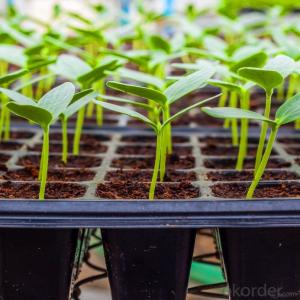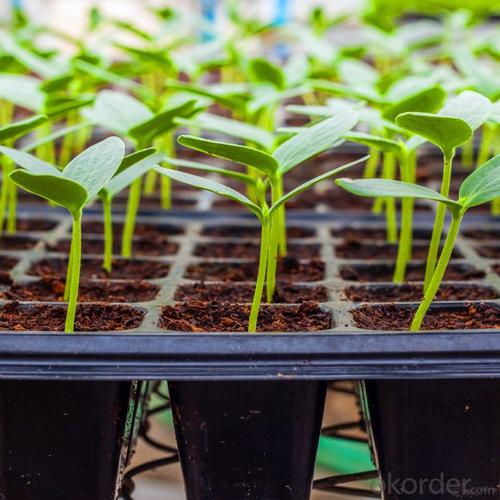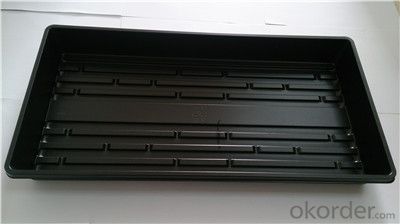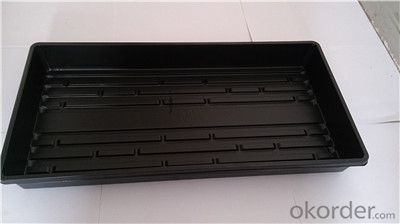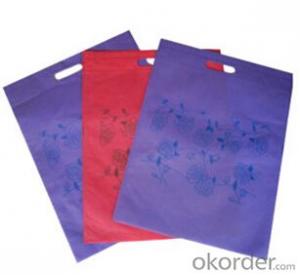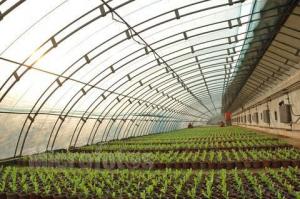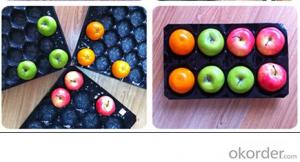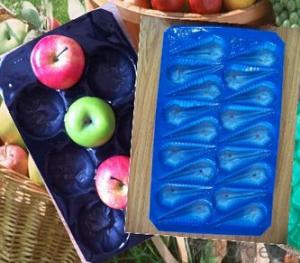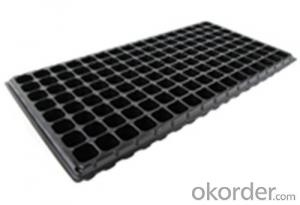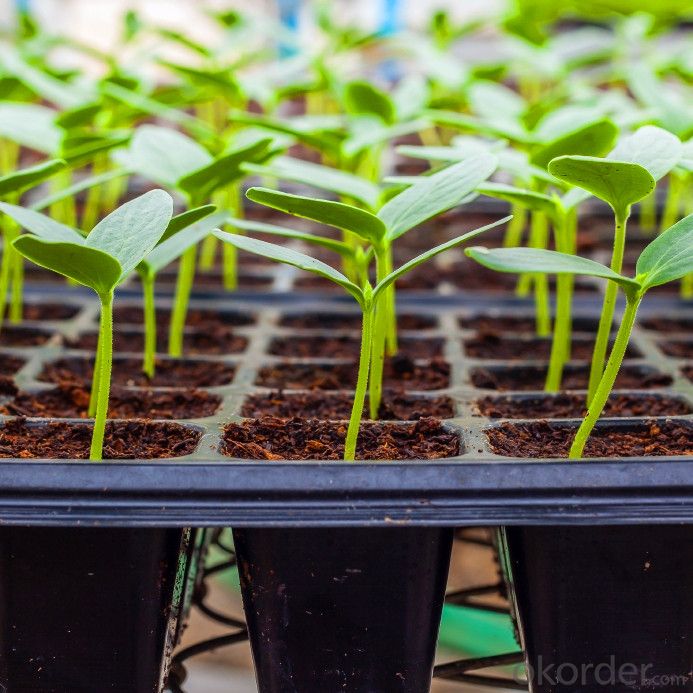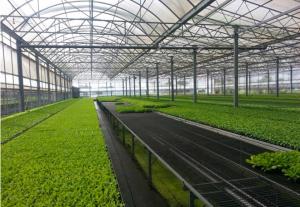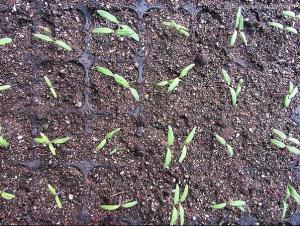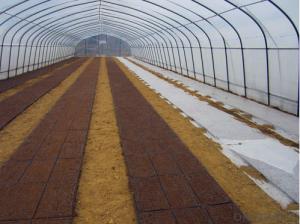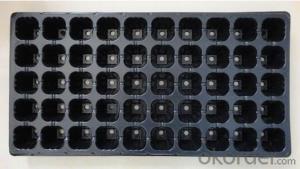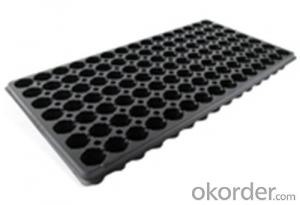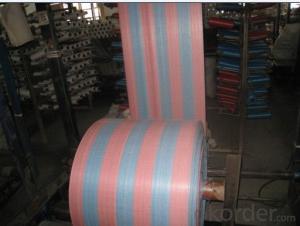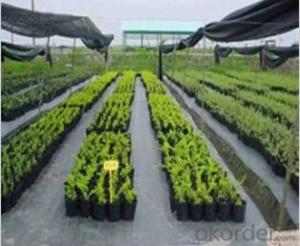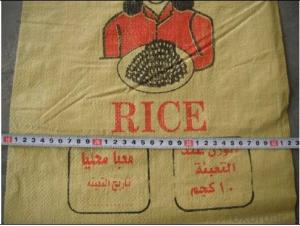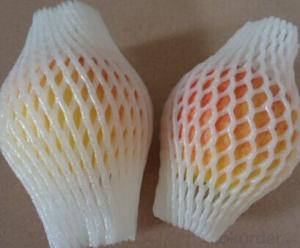Plastic Seedling Tray /Plastic Flower Tray, Seeding Tray
- Loading Port:
- China main port
- Payment Terms:
- TT OR LC
- Min Order Qty:
- 1000 pc
- Supply Capability:
- 10000000 pc/month
OKorder Service Pledge
OKorder Financial Service
You Might Also Like
Structure of the seed tray: · Top quality and competitive price. · Variety design and good appearance. · Easy to use, and remove. · Durable and reusable. · Eco-Friendly.
Advantages: · Top quality and competitive price. · Variety design and good appearance. · Easy to use, and remove. · Durable and reusable. · Eco-Friendly.
Application: · Ideal for Starting seeds and Transplanting Seedling. · Suitable for both manual and automatic planting. · Suitable for Propagating Vegetables, Flowers and other plant from seed · in green-house or indoors.
Description Main Features of the seed tray: · Ideal for Starting seeds and Transplanting Seedling. · Suitable for both manual and automatic planting. · Suitable for Propagating Vegetables, Flowers and other plant from seed in green-house or indoors. Using time: · thickness of 0.5mm can be used 1 to 2 times. · thickness of 0.6mm can be used 3 to 4 times. · thickness of 0.7mm can be used 5 to 6 times. · thickness of 0.8mm can be used 7 to 8 times. · thickness of 0.9mm can be used 8 to 9 times. · thickness of 1.0mm can be used 8 to 10 times. Thickness vs. Weight: · Thickness of trays are from 0.5mm to 1.0mm. · 1.0mm: 155g±5g; 100pcs/ctn. · 0.9mm: 140g±5g; 120pcs/ctn. · 0.7mm: 110g±5g; 150pcs/ctn. · 0.6mm: 95g±5g; 180pcs/ctn. · 0.5mm: 80g±5g; 200pcs/ctn.
Seed Tray Specification: Materialps/pvcThickness0.5mm-1.5mm, standard:1mmWeight80g(±5)g-230g(±5)g, Standard weight:155g(±5)gSizelength:490mm-540mm, width:190mm-345mm,depth:25mm-150mm Standard:54mmX28mmCell count18-512Packagein cartonUsing time8-10 times
FAQ: Q:How Can I Get A Sample? A:You can get samples by communicate with our export sales. Q:How Long Is Delivery? A:Delivery time will be 7-25 days according to order quantity. Q:What Is The MOQ? A:Our MOQ is 1*20FT container quantity, allow to mix several items. Q:What Is Our Normal Payments Terms? A:Our normal payment terms now is T/T, L/C or Western Union,Papal. Q:How Do I Order Your Products? A:You can check our website for any items you interest and you can also get communication with our export sales and order for it accordingly. Q:What Kinds Of Material We Use In Our Product? A:Our plastic flower pots use material such as PP polymer or PE polymer.
|
- Q: Are there any disadvantages to using agricultural plastic products?
- Yes, there are several disadvantages to using agricultural plastic products. Firstly, the production and disposal of these plastic products contribute to environmental pollution, particularly through the release of greenhouse gases and the accumulation of plastic waste in landfills and oceans. Additionally, plastic materials used in agriculture can degrade soil quality, hinder natural soil processes, and contaminate groundwater due to leaching of harmful chemicals. Furthermore, the reliance on agricultural plastic products may lead to increased costs for farmers, as they need to continuously purchase and replace these materials. Lastly, plastic debris left behind in fields can pose risks to livestock, wildlife, and human health if accidentally ingested or entangled.
- Q: My sportsman has a crack in the plastic and also i want a different color. I cant find one store that sell stock plastics that are new. If you know of any store please tell me.
- put it in your local newspaper classifieds
- Q: How are plastic containers used in agriculture?
- Plastic containers in agriculture are used for various purposes such as seedling propagation, storage of fertilizers and pesticides, transportation of harvested crops, and even as temporary greenhouse structures. They provide durability, protection, and convenience in several aspects of agricultural operations.
- Q: How do nursery trays assist in the production of high-quality seedlings?
- Nursery trays help in the production of high-quality seedlings by providing a controlled environment for seed germination and early growth. They offer proper drainage, aeration, and insulation, which promotes healthy root development and prevents the risk of root diseases. The trays also allow for efficient seedling management, including easy transplanting and minimizing root disturbance. Overall, nursery trays contribute to the uniform growth, vigor, and survival rates of seedlings, resulting in the production of high-quality plants.
- Q: How do you choose ground cover for a cottage-style front garden?
- When choosing ground cover for a cottage-style front garden, it is important to consider the overall aesthetic and theme of the garden. Opt for traditional, low-growing plants that add charm and character to the space. Look for varieties that are easy to maintain, provide good coverage, and complement the colors and textures of the surrounding plants and hardscape elements. Additionally, consider the amount of sunlight and soil conditions in the area to ensure the selected ground cover will thrive in the specific environment.
- Q: Can nursery trays be used for starting bonsai seedlings?
- Yes, nursery trays can be used for starting bonsai seedlings. These trays provide a convenient and efficient way to germinate and nurture bonsai seedlings, as they offer ample space for multiple seedlings and allow for easy monitoring and watering. However, it is important to ensure that the trays have proper drainage holes and are filled with suitable soil for bonsai cultivation.
- Q: Can ground cover plants be used to create natural weed barriers?
- Yes, ground cover plants can be used to create natural weed barriers. These plants spread and form a dense cover over the soil, blocking sunlight and preventing weed growth. Additionally, ground cover plants compete with weeds for resources like water and nutrients, further inhibiting their growth.
- Q: I want to start my own organic garden, but what I am wondering is.. Is it okay to plant organic plants in plastic containers? Or do they pick up the toxins from them? I don't believe in using plastic because it's manufacture is horrible for the environment, but if it's already made, can I use it??Basically I just need to know if all sorts of nasty things will harm the organic nature of my plants if planted in plastic.
- you will surely die if eat vegetables grown in plastic.
- Q: Can ground cover be used to replace traditional mulch in flower beds?
- Yes, ground cover can be used to replace traditional mulch in flower beds. Ground cover plants, such as creeping thyme or ajuga, can provide similar benefits to traditional mulch, such as suppressing weed growth, conserving soil moisture, and adding aesthetic appeal. Additionally, ground cover plants also offer the advantage of being low-maintenance and can provide additional ground protection against erosion.
- Q: Can nursery trays be used for flower arrangements?
- Yes, nursery trays can be used for flower arrangements. They provide a convenient and practical option for organizing and displaying flowers in a neat and organized manner.
Send your message to us
Plastic Seedling Tray /Plastic Flower Tray, Seeding Tray
- Loading Port:
- China main port
- Payment Terms:
- TT OR LC
- Min Order Qty:
- 1000 pc
- Supply Capability:
- 10000000 pc/month
OKorder Service Pledge
OKorder Financial Service
Similar products
Hot products
Hot Searches
Related keywords
